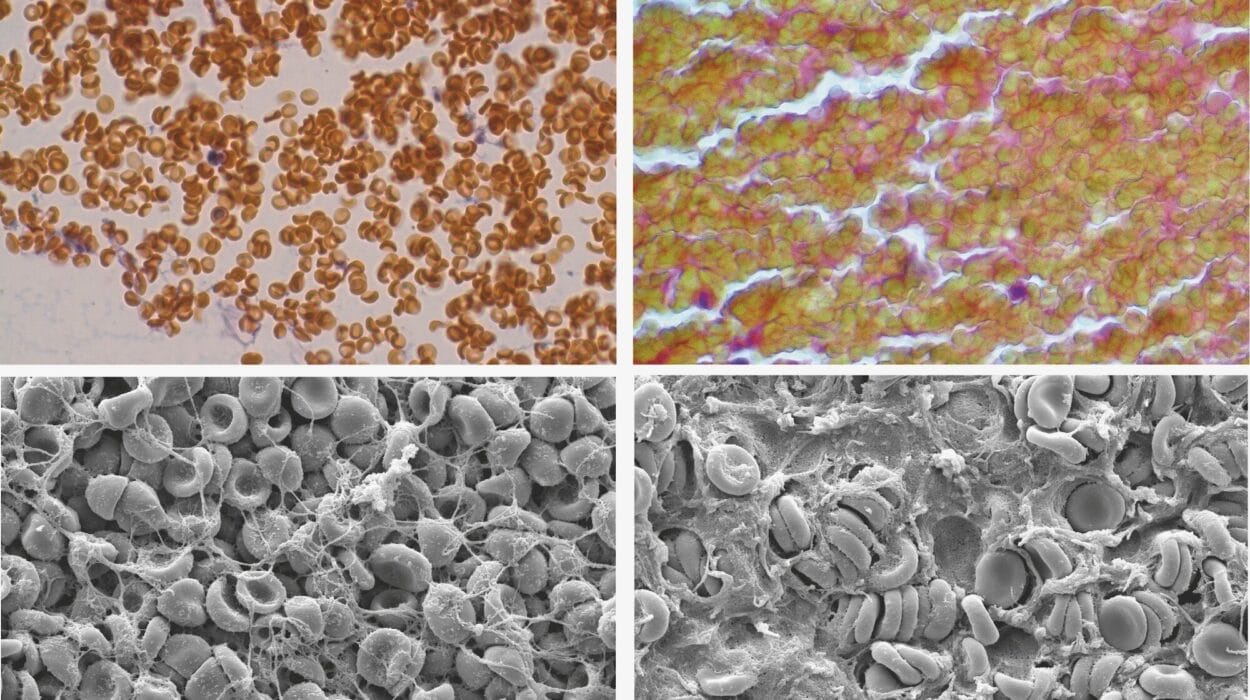Every morning, millions of people around the world wake up to the same cruel ritual. The sun rises, but so does the stiffness. Fingers that once played piano, held children, or planted gardens now creak like rusty hinges. Knees that carried lifetimes of joy buckle beneath a whisper of motion. Shoulders ache not from effort but from the weight of years. This is the silent world of arthritis—a condition both invisible and deeply felt.
For those who live with it, arthritis is more than a diagnosis. It’s a companion that never leaves, a shapeshifter that flares without warning, a thief that robs simple pleasures. And yet, hidden in this daily struggle is a profound resilience. The same people who endure the relentless throb of inflamed joints also raise families, run businesses, write novels, and fight for better treatments.
Pain is the common thread, but it’s not the whole story. Arthritis is also about the quest for relief—for answers, for science that works, and for dignity in the face of chronic discomfort. This article is for those who live in that search. What really works in managing arthritis pain? Let’s dive into the evidence, the experience, and the evolving hope behind treating one of humanity’s oldest ailments.
Understanding the Enemy: What Is Arthritis, Really?
Before pain can be managed, it must be understood. The term “arthritis” is deceptively simple—it means inflammation of the joints—but encompasses over 100 different conditions. The two most common forms are osteoarthritis (OA) and rheumatoid arthritis (RA), though others, like psoriatic arthritis, gout, and ankylosing spondylitis, also leave their signature on lives.
Osteoarthritis is primarily a disease of wear and tear. Over time, the cartilage that cushions joints erodes, bones rub against one another, and pain, stiffness, and swelling ensue. RA, on the other hand, is autoimmune: the body’s immune system mistakenly attacks the lining of the joints, causing inflammation, deformity, and systemic symptoms like fatigue.
The key distinction matters for treatment. OA is often localized and mechanical, best treated by approaches that strengthen muscles and protect joints. RA and other autoimmune arthritides demand immune-modulating therapies. But no matter the type, pain is the core experience—and managing it means navigating biology, behavior, and the deep psychology of chronic illness.
The Science of Pain: Why It Hurts So Much
Pain is not just a signal from the body to the brain. It’s a whole conversation—a looping, dynamic, emotionally colored experience shaped by nerves, memories, and expectations. In arthritis, pain is both nociceptive (from actual tissue damage) and neuropathic (from dysfunctional signaling). Over time, the nervous system can become hypersensitized, meaning even mild inflammation triggers intense discomfort.
Moreover, chronic pain rewires the brain. Regions associated with emotion, attention, and decision-making all become involved. Pain becomes not just a sensation, but a filter through which the world is perceived. Understanding this complexity is vital, because it explains why arthritis pain cannot be treated with a single pill or procedure. It demands a multidimensional approach—one that embraces biology, yes, but also movement, mood, and mindset.
Medication: A Double-Edged Sword
When arthritis pain flares, most people understandably reach for medications. And for good reason: many drugs are effective at reducing inflammation and dulling discomfort. But the story is not so simple.
For osteoarthritis, first-line medications include acetaminophen (paracetamol) and nonsteroidal anti-inflammatory drugs (NSAIDs) like ibuprofen or naproxen. NSAIDs reduce inflammation and are generally more effective, but carry risks—especially for long-term users. Gastrointestinal bleeding, kidney damage, and cardiovascular events are not rare complications. For people with heart disease, high blood pressure, or older age, NSAIDs must be used cautiously.
Rheumatoid arthritis and other autoimmune forms require more targeted treatments. Disease-modifying antirheumatic drugs (DMARDs) such as methotrexate can slow disease progression, while newer biologics—like TNF inhibitors (e.g., etanercept, adalimumab)—have revolutionized care. These drugs modulate specific components of the immune system, reducing inflammation at its source.
Corticosteroids, like prednisone, offer fast relief during flare-ups but are problematic long-term due to risks of bone thinning, weight gain, and diabetes. Opioids, once widely prescribed for arthritis, are now used sparingly due to addiction risk and diminishing returns over time.
So what’s the takeaway? Medication can be a crucial tool—but it’s not a cure, and it must be part of a broader strategy.
The Power of Motion: Exercise as Medicine
When every step hurts, the last thing anyone wants to do is move. But paradoxically, movement is one of the most effective treatments for arthritis pain. Regular, low-impact exercise reduces stiffness, builds supportive muscle, enhances joint flexibility, and releases natural endorphins that blunt pain perception.
The science backs it up. In multiple large trials, people with knee and hip osteoarthritis who participated in supervised exercise programs reported less pain and better function than those who took pain medications alone. The effects were comparable to NSAIDs, without the side effects.
The best exercises are gentle but consistent: walking, swimming, cycling, tai chi, and yoga. Strength training, especially under supervision, helps protect joints by building stabilizing muscles. Flexibility exercises maintain range of motion. And aerobic activity improves circulation and cardiovascular health, which is often compromised in people with inflammatory arthritis.
Still, fear often keeps people sedentary. “Won’t exercise make it worse?” is a common worry. The answer, in most cases, is no. In fact, immobility worsens arthritis. Joints are made to move. Cartilage gets nourishment through motion. Muscles weaken quickly when unused. The key is finding the right kind of movement and pacing it according to the body’s signals.
Diet, Inflammation, and the Quiet Revolution
There’s no magic food that cures arthritis, but diet matters more than many people think. Chronic inflammation—the engine behind RA and a contributor in OA—is influenced not only by immune dysfunction but by what we eat.
Anti-inflammatory diets emphasize whole, unprocessed foods: fruits, vegetables, fatty fish, whole grains, nuts, and olive oil. These foods are rich in antioxidants, omega-3 fatty acids, and polyphenols that may reduce systemic inflammation.
Several studies show that people who adopt Mediterranean-style diets report reduced arthritis pain and improved joint function. Omega-3s, in particular, have demonstrated modest but real benefits in reducing morning stiffness and joint tenderness in RA. Fish oil supplements may help, though dietary sources (like salmon, sardines, and flaxseed) are preferable when possible.
Obesity is a major contributor to osteoarthritis, especially in weight-bearing joints like the knees and hips. Every extra pound adds pressure—up to four times that weight—on the knees with each step. Weight loss, even as little as 5-10% of body weight, significantly reduces pain and improves mobility.
On the flip side, diets high in sugar, processed meats, and refined carbohydrates are associated with increased inflammation and worse outcomes. Gluten sensitivity, while rare, can exacerbate symptoms in some individuals—particularly those with autoimmune arthritis or celiac disease.
The Role of Mind and Mood
Pain and mood are intimately linked. Depression, anxiety, and social isolation are common companions of arthritis, and they amplify pain perception through a complex dance of brain chemistry and nervous system signaling. Conversely, hope, support, and emotional resilience can dramatically reduce the suffering that pain causes—even if the pain itself remains.
Cognitive-behavioral therapy (CBT) is one of the most evidence-based psychological interventions for arthritis. It helps individuals reframe catastrophic thoughts, improve coping mechanisms, and engage in meaningful activity despite discomfort. Acceptance and Commitment Therapy (ACT), mindfulness, and other strategies that increase present-moment awareness also show promise.
Chronic pain erodes self-esteem. It shrinks life. But mental health support, peer groups, and open conversations can stretch it back open. Pain may be inevitable—but suffering can often be reduced.
Alternative and Complementary Approaches
Many arthritis sufferers turn to alternative therapies—acupuncture, massage, herbal supplements, chiropractic care—not because they distrust science, but because conventional treatments sometimes fall short. And surprisingly, some of these approaches are now supported by research.
Acupuncture has shown modest but consistent benefits in osteoarthritis of the knee and hand, particularly when combined with other treatments. The theory of energy meridians may be metaphoric, but the needles appear to stimulate nerve pathways and trigger the release of endogenous opioids.
Massage improves circulation, reduces muscle tension, and may alleviate joint pain by decreasing stress and improving sleep. Mind-body techniques like tai chi and qigong blend movement and meditation, offering gentle physical activity with psychological benefits.
Supplements such as glucosamine and chondroitin remain controversial. Some studies suggest mild improvement in joint pain, while others show no benefit beyond placebo. Turmeric (curcumin), an ancient anti-inflammatory spice, has attracted scientific interest, with some trials showing comparable effects to NSAIDs in reducing pain—especially in RA. As always, quality, dosage, and safety vary, and patients should consult with a physician before beginning any supplement regimen.
The Future of Arthritis Management
New frontiers in arthritis treatment are rapidly unfolding. Biologics and JAK inhibitors continue to transform RA treatment, offering targeted immune modulation with increasing precision. Gene therapy, though still experimental, hints at long-term disease modification. Stem cell injections, once the stuff of science fiction, are being explored for cartilage regeneration, though results remain mixed.
Wearable technology and artificial intelligence are helping patients track symptoms, optimize activity levels, and identify early flares before they spiral. Personalized medicine, which tailors treatment based on genetic and molecular profiles, is gaining ground. As our understanding of the immune system deepens, so too does the potential for truly transformative therapies.
Yet even as we look to the future, the fundamentals remain. Human connection. Consistent movement. Nourishing food. Courage in the face of pain. These will always be the backbone of arthritis care.
Living Beyond the Pain
Arthritis may shape life, but it does not have to define it. Across the globe, people with arthritis climb mountains, write books, run marathons, raise children, and find love. They do so not because the pain is gone—but because they have learned to dance with it.
What really works in arthritis pain management is not a single cure, but a tapestry of science, self-awareness, and support. Medications ease the edge. Exercise restores motion. Diet cools the inner fire. Therapy reshapes the emotional terrain. And compassion—from oneself and others—fills the space that pain once tried to occupy alone.
In the end, managing arthritis is less about fighting the body and more about learning to live in it, wisely and well.






